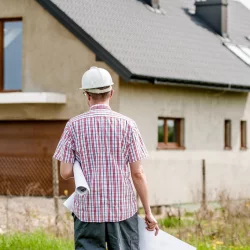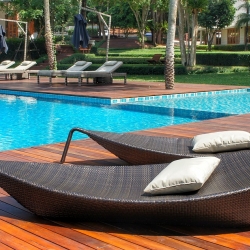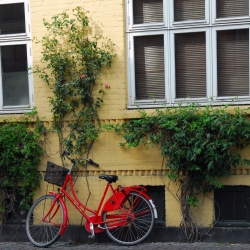Common Flooring Problems in the Summer
Summer is the season of warmth, sunshine and often a lot of humidity. While these conditions can be great for outdoor activities, they can present a range of challenges for indoor flooring. Understanding these problems and knowing how to prevent them can save you from costly repairs and let you extend the lifespan of your flooring.
Humidity and Moisture Damage
High humidity and increased moisture levels during summer can lead to various flooring problems. Solid wood flooring is particularly susceptible as it can absorb moisture from the air, causing the wood to expand. This expansion can result in warping, cupping or even buckling of the floorboards. Similarly, moisture can get trapped under laminate and vinyl flooring, which will lead to mould and unpleasant odours.
You can prevent this from causing damage by using dehumidifiers in areas with high humidity, helping to maintain an optimal moisture level in the air, while preventing wood floors from absorbing excess moisture. You should ensure your house is well-ventilated; using exhaust fans in your bathrooms and kitchen. Regular maintenance is also crucial as you can check for any moisture damage, addressing issues promptly and preventing further damage.
Expansion and Contraction
Temperature fluctuations during summer can cause flooring materials to expand and contract. Wood, laminate and even luxury vinyl flooring can expand in elevated temperatures and contract when it cools down. This can lead to gaps between floorboards, loose planks and an uneven surface.
Allowing the flooring materials to acclimatise to the room’s temperature and humidity at least 48 hours before installation is crucial. By letting the materials adjust to the room’s environment, you can reduce the risk of expansion and contraction. Leaving expansion gaps around the perimeter of the room during installation allows the floor to expand and contract without causing damage. You should also keep a consistent indoor temperature and humidity level throughout the year!
Sunlight Damage
Prolonged exposure to direct sunlight can cause fading and discolouration to your flooring. When floors such as carpet, laminate and wood lose their colour due to UV rays, it can make the flooring look old and worn out.
Consider window treatments like curtains, blinds or UV-protective window films to block direct sunlight from reaching your floors. You can place rugs or mats in areas that have a lot of sun exposure, protecting the floor beneath. Make sure to rotate rugs and furniture periodically to ensure your floor has an even exposure to sunlight, preventing uneven fading.
Scratches and Dents
Summer often makes your home more active with children playing indoors, pets running around or you might be hosting parties, all of which increases the risk of scratches and dents. Solid wood and laminate flooring are particularly susceptible to this kind of damage.
To try and combat this, you can place felt pads beneath furniture legs. Preventing any damage when shuffling furniture around. Once again, rugs and runners are your friends when it comes to protecting your floors; you can use these to fight against wear and tear in busy areas. By regularly sweeping or vacuuming your floors, you remove the chance of dirt and debris leaving scratches.
Mould and Mildew Growth
High humidity and moisture levels in the summer can create the perfect breeding ground for mould and mildew. This is especially problematic in areas like kitchens, bathrooms and basements. Mould and mildew not only damage your flooring, but they also pose a risk to your health.
Dehumidifiers and proper ventilation in moisture-prone areas are key to preventing mould and mildew. You should make sure to clean up any spills and dry the area promptly to stop moisture from seeping into the flooring. Regularly inspecting susceptible areas is another crucial element in spotting and dealing with mould or mildew before it can cause costly damage.
Flooring Adhesive Failure
High temperatures and humidity can affect the adhesive used in linoleum, tile and vinyl flooring. The adhesive can soften, which causes the floor to lift or become loose.
Using quality adhesives that are designed to withstand temperature and humidity fluctuations are the best way to avoid this problem. Along with maintaining a consistent indoor climate to prevent the adhesive from failing.
More to Read:
Previous Posts:








